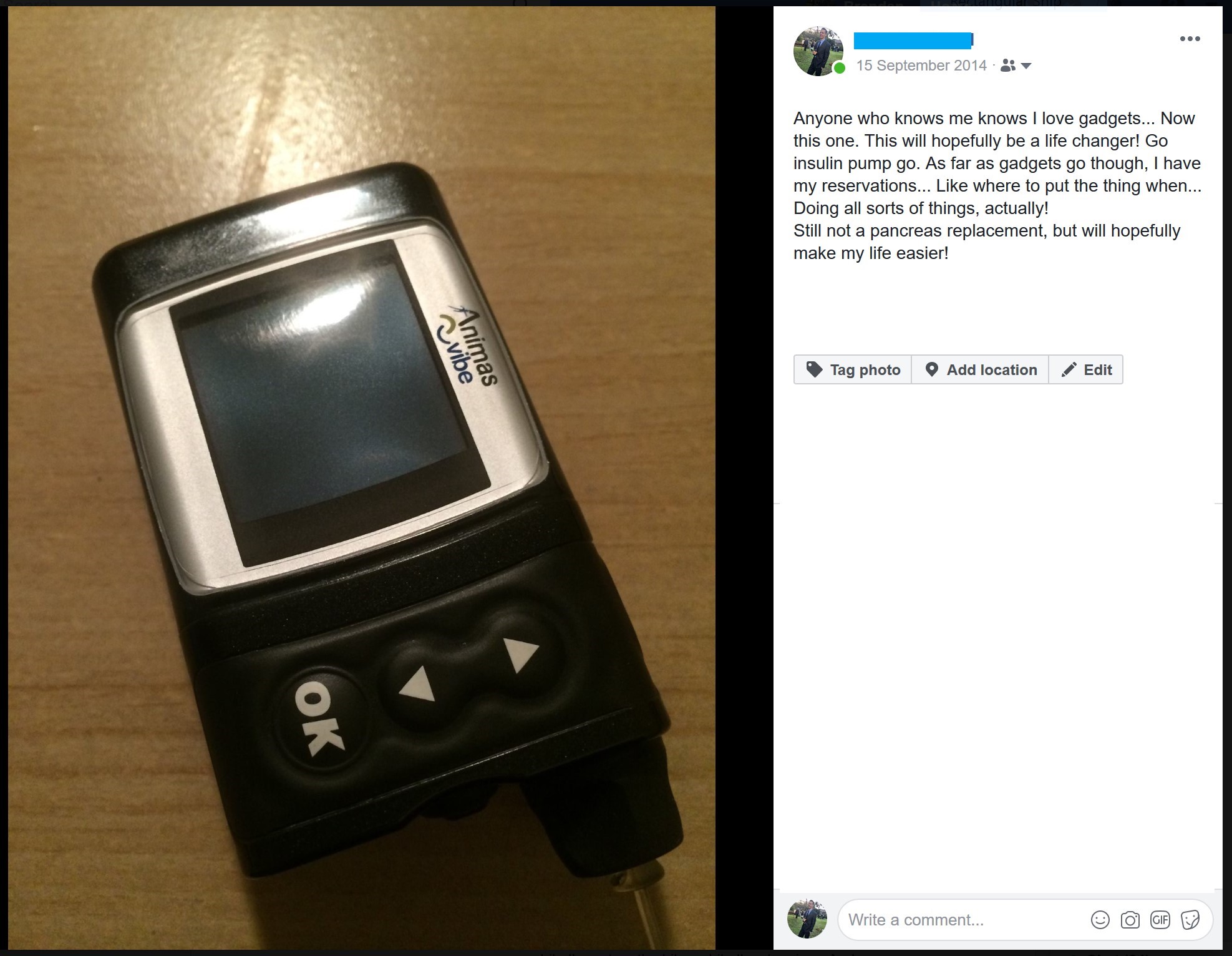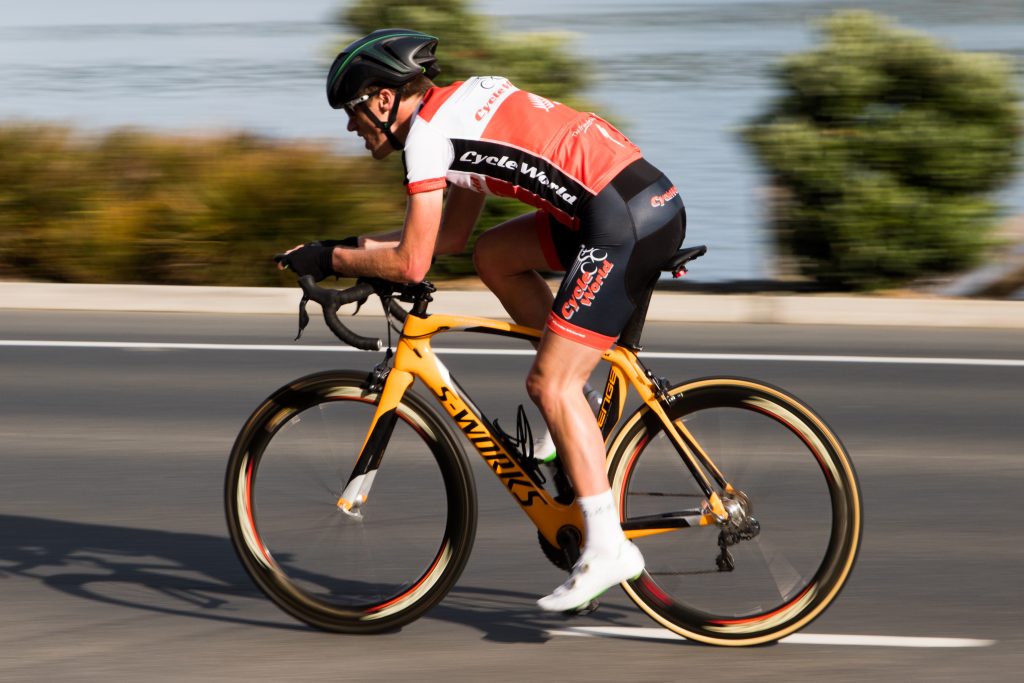
I’ve talked in previous posts on this blog about how my insulin pump changed my Diabetes for the better. In reality, it was a life saver.
Recently I’ve seen a number of people post on social media asking if an insulin pump was really that good. To be honest, I can completely understand how people can be hesitant about using an insulin pump, so I thought I’d talk about how it made a difference for me, and how now there’s absolutely no way I’ll go back to injections!
I must admit that it did take some getting used to the fact that I would have a short needle in my skin ALL. THE. TIME. And even to this day, if I don’t quite get the technique right while putting the needle in or put it in the wrong area of my abdomen, I can experience some discomfort. But all in all, there are no problems with having that needle in my skin all the time. I can lie on it, put my hand on it and generally put quite a lot of pressure on it.
Something that was a little tricky was the question of just where the hell I was going to put the thing when I did… well… all sorts of things. One of the first situations that came to mind… Where could I safely place it while riding or racing my bike? I didn’t want to fall and damage the pump on impact, and I didn’t want to land on it when I hit the ground. One idea that I experimented with was clipping it to the back of my bib cycling shorts (the shorts have lycra shoulder loops to help hold them up instead of an elastic waistband) This would sometimes work, but it would depend on where the needle was in. I only had so much tubing between the pump and the needle to work with! The idea I had in my head was that having the pump placed so high and between my shoulder blades meant that the chances of it being hit or me landing on it if I crashed were slim. Thankfully I’ve never had to test this theory! The photo below shows the lump of the pump sitting under my top in the white area.

For a long time now I’ve just put the pump in one of the three back pockets of my cycling top as it’s just handier to reach there. I might yet switch back to attaching the pump up high for some events or when pocket space is at a premium.
The pump came with a belt clip. This was good for a while until the belt clip attachment wore out and the belt clip started to fall off wherever I had attached it. At the start this mean I could easily attach the pump to any pair of shorts or trousers that I was wearing. Now it just tends to go in a pocket.
… I honestly can’t think how women deal with their pump while wearing a dress… Moving on!
One of the key benefits for me when I went on to the pump, was that I was getting the insulin that I needed… All the time. Sure, there was a bit of adjustment needed during the first few months of using the pump, but it meant that there was little chance that I would miss a dose of insulin, which was easy enough to do when taking insulin by injections.
An insulin pump is used to deliver insulin in two different ways. One is a “bolus” dose of insulin which is used to either enable the body to process carbohydrates from food, or correct blood glucose levels that are too high. The other way in which the pump delivers insulin is a “basal” rate which is a certain amount of insulin all day, every day. This is used to keep blood glucose levels under control between bolus doses.
While the pump gives me insulin all the time at a basal rate, there are times where this basal rate needs to be adjusted and the insulin pump can be programmed to give different basal rates. And this would be near impossible to achieve with injections of insulin, even with up to 6 shots a day. My body, along with many and maybe all others’ who have Type 1 Diabetes, has differing levels of insulin resistance during the day. This means that my basal rate needs to change in order to keep my blood glucose levels from running too high and causing damage to my body. There is a concept of the “dawn phenomenon” which is where in the early hours of the morning, your body prepares for your awakening by doing stuff (yeah, I’m no medical expert!!!) such as releasing hormones that result in a rise in your blood glucose level. Now, with someone who doesn’t have Diabetes, their’ pancreas which is in working order takes care of that by delivering the insulin needed to compensate for the rise in blood glucose level. Those of us with Diabetes and a pancreas that doesn’t work so well, the pump is ideal because it can be programmed to give a little more insulin in the small hours of the morning. This is a far better idea than having to deal with high blood glucose levels overnight or in the morning.
Now… On to how the pump helps me with being physically active. When I do any physical activity which is over maybe half an hour, I tell the pump to give me a “temporary basal reduction”. What this means is I can get the pump to give me less insulin than if I happened to be sitting on my butt doing things like writing blog posts or working at my desk. These temporary basal rates stop my levels from dropping below what is ideal and causing me to have a hypoglycemic incident which can wreck a bike ride or race, or even worse, cause my blood glucose level to drop so low that I become unconscious.
Sometimes when I’m sick my blood glucose levels run far too high. During such times I can use a temporary basal rate that gives me more insulin. This helps keep my Diabetes under control, makes me feel physically better and will help me get rid of whatever bug it is that I have at the time.
I mentioned at the start of this post that I think the insulin pump for me has been a life saver. But it’s also given me so much more flexibility in my life in so many ways. I’ve had better control of my Diabetes than I ever had before I had the pump and I firmly believe it’s helped me become fitter in my cycling. Before I started using the pump I was probably a little too skinny. Since being on the pump and having the correct amount of insulin, I’m at a healthier weight. And a plus side… I work in technology so the pump appeals to me as a gadget.
Pingback: Blood glucose levels by finger pricks??? Pffft. So very old school… – typeonecyclist
Mark Munday
typeonecyclistadmin
Amy
typeonecyclistadmin